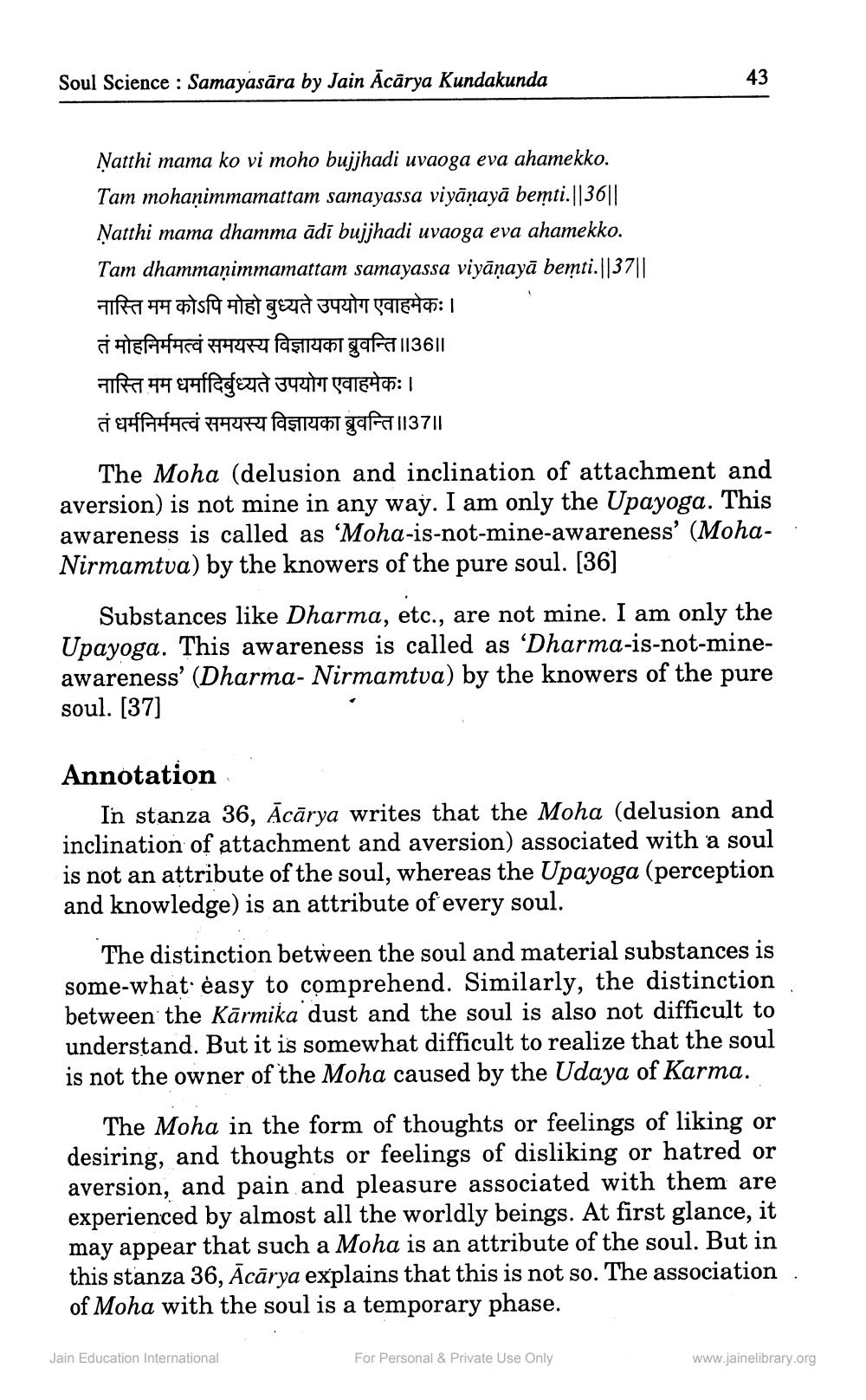________________
Soul Science : Samayasāra by Jain Ācārya Kundakunda
Ņatthi mama ko vi moho bujjhadi uvaoga eva ahamekko. Tam mohaạimmamattam samayassa viyāņayā bemti.||36|| Ņatthi mama dhamma ādi bujjhadi uvaoga eva ahamekko. Tam dhammaņimmamattam samayassa viyāņayā bemti.||37||| नास्ति मम कोऽपि मोहो बुध्यते उपयोग एवाहमेकः। तं मोहनिर्ममत्वं समयस्य विज्ञायका ब्रुवन्ति ।।36।। नास्ति मम धर्मादिर्बुध्यते उपयोग एवाहमेकः। तं धर्मनिर्ममत्वं समयस्य विज्ञायका ब्रुवन्ति ।।37||
The Moha (delusion and inclination of attachment and aversion) is not mine in any way. I am only the Upayoga. This awareness is called as 'Moha-is-not-mine-awareness' (Moha- : Nirmamtva) by the knowers of the pure soul. [36]
Substances like Dharma, etc., are not mine. I am only the Upayoga. This awareness is called as 'Dharma-is-not-mineawareness' (Dharma- Nirmamtva) by the knowers of the pure soul. [37]
Annotation
In stanza 36, Ācārya writes that the Moha (delusion and inclination of attachment and aversion) associated with a soul is not an attribute of the soul, whereas the Upayoga (perception and knowledge) is an attribute of every soul.
The distinction between the soul and material substances is some-what easy to comprehend. Similarly, the distinction between the Kārmika dust and the soul is also not difficult to understand. But it is somewhat difficult to realize that the soul is not the owner of the Moha caused by the Udaya of Karma.
The Moha in the form of thoughts or feelings of liking or desiring, and thoughts or feelings of disliking or hatred or aversion, and pain and pleasure associated with them are experienced by almost all the worldly beings. At first glance, it may appear that such a Moha is an attribute of the soul. But in this stanza 36, Ācārya explains that this is not so. The association. of Moha with the soul is a temporary phase.
Jain Education International
For Personal & Private Use Only
www.jainelibrary.org




